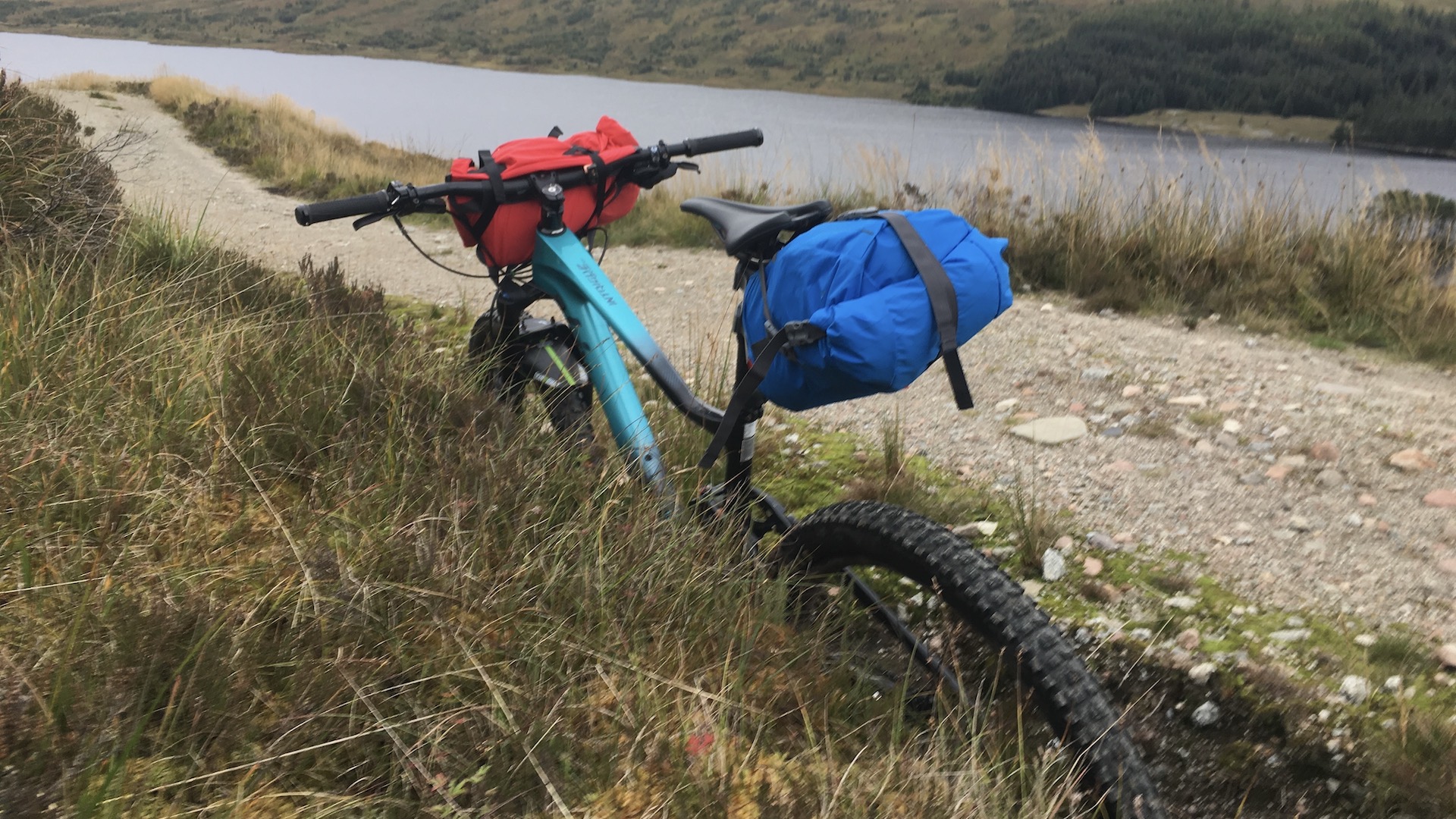
Even if you're cut down the weight of your gear by swapping your tent for a bivy sack and leaving your camping stove at home, you'll notice that your bike handles slightly differently when loaded up with bikepacking gear.
Don't worry though, because there are some steps you can take when preparing and riding to minimize the effect and make sure you stay upright.
Load it up
First of all, make sure your bikepacking bags are secured firmly, and that they're packed down as tightly as possible. Many bags have a roll-top design and straps to cinch them closed, which has the double advantages of keeping out dirt and water, and allowing you to compress them as tightly as possible. The last thing you want is anything shifting about while you're riding and sending you off balance.
Keep the heaviest items low on your bike to avoid making it top-heavy, and keep them positioned as close to the center as possible. That means your heaviest gear should go on a frame bag, nice and stable in the middle.
E-bikes are an exception to this rule, because the battery is going to be the heaviest thing on board. If you're riding an e-bike, check the manual to find out the maximum recommended load, and how it should be split between the front and the back.
Lightweight items can go in the handlebar bag, because they won't affect steering and make it feel sluggish. Keep items that you need frequently like your wallet, phone and snacks in a pocket on your handlebar bag, or at the top so you don't have to spend time rummaging through.

Keep it smooth
Provided you've loaded it well, you'll notice that the bike feels more stable underneath you due to the extra weight, which can be an advantage. However, when you're riding, the extra weight will add momentum and changing speed will require more energy, so think about keeping things as smooth as possible, avoiding rapid acceleration and braking, and not entering corners too fast.
All the latest inspiration, tips and guides to help you plan your next Advnture!
You'll notice the difference between a loaded and unloaded bike most when it comes to hills. Take particular care on descents, because the added momentum means it'll take you longer to stop (probably a lot longer). Start braking nice and early until you get a feel for the change in how your bike handles.
The good news is, you'll soon get used to the difference in handling, and after a couple of hours in the saddle you'll barely have to think about it. Whenever you take a break, check all your bags and tighten up any where the contents have shifted.
This article is part of Advnture's Bikepacking Week 2023 (running from Monday 22 to Sunday 28 May), our ultimate guide to adventuring on two wheels including essential advice, gear, and features to help you plan the perfect expedition.

Cat is the editor of Advnture, She’s been a journalist for 15 years, and was fitness and wellbeing editor on TechRadar before joining the Advnture team in 2022. She’s a UK Athletics qualified run leader, and in her spare time enjoys nothing more than lacing up her shoes and hitting the roads and trails (the muddier, the better), usually wearing at least two sports watches.
